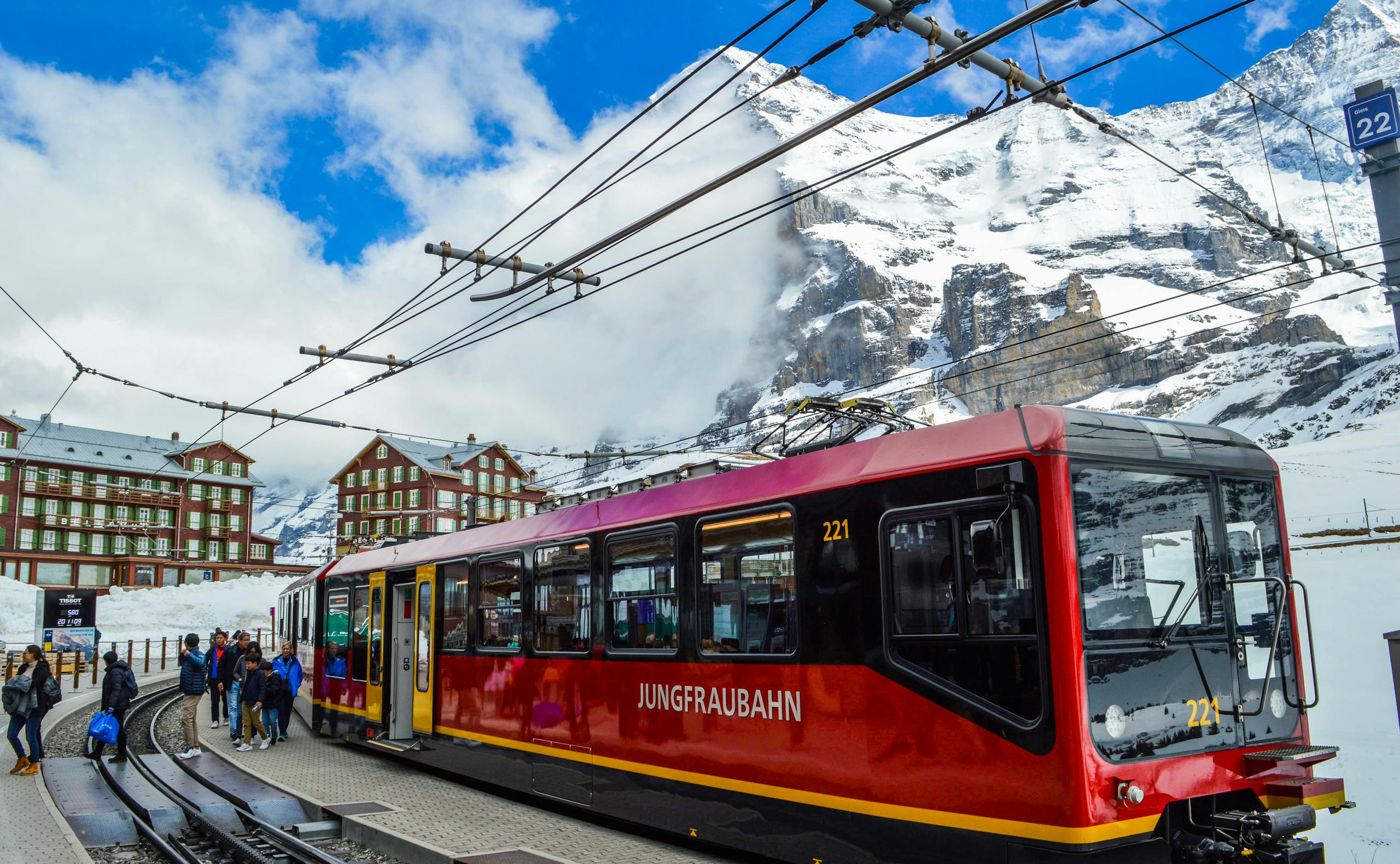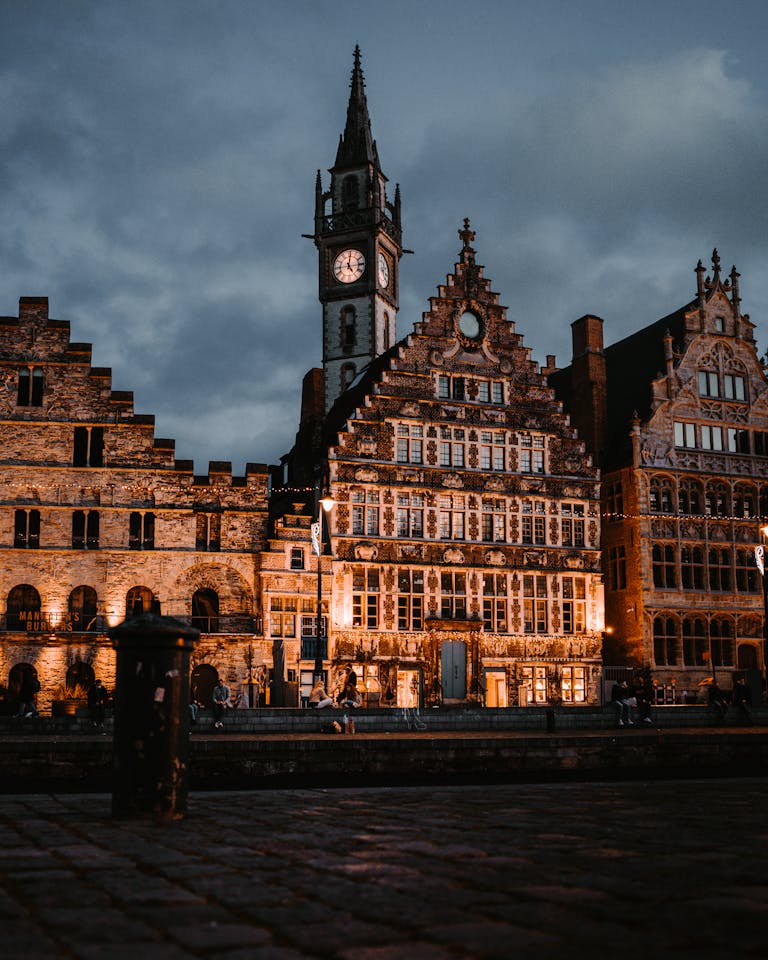The Ultimate Swiss Pass Guide

The Beauty of Swiss Train Travel
If there’s one thing Switzerland is known for (aside from chocolate and jaw-dropping mountain views), it’s the trains. Swiss public transportation is not only incredibly scenic but also seamless — clean, punctual, and ridiculously efficient.
But if you’ve ever tried to figure out which train pass to buy, you already know: it’s… a lot.
When I was planning my trip to the Jungfrau region, I spent hours researching different pass options. From all-country coverage to super-specific regional cards, it felt like I was planning a second vacation just to understand the ticketing.
That’s why I’ve put together this guide — whether you’re exploring Switzerland from end to end, basing yourself in one mountain town, or just squeezing in a few scenic rides, this breakdown will help you pick the best value train pass for your travel style.
Types of Train Passes in Switzerland (National)
| Pass | Coverage | Duration | Approx. Cost (2nd Class) | Best For |
|---|
| Swiss Travel Pass | Unlimited travel on trains, buses, boats, local transport, free museums, scenic routes (reservations extra) | 3, 4, 6, 8, or 15 consecutive days | CHF 240–485 | Travelers exploring multiple regions |
| Swiss Travel Pass Flex | Same as above, but on non-consecutive days | 3, 4, 6, 8, or 15 days within 1 month | CHF 270–510 | Trips with break/rest days in between |
| Swiss Half Fare Card | 50% off all public transport including mountain excursions | Valid for 1 month | CHF 120 flat | Flexible or slow travelers |
Saver Day Pass | Unlimited 1-day travel on most public transport | 1 day only | CHF 29–89 (depends on how early you book) | Budget travelers or short stays |
💡 Note: Prices vary by season, age (youth/senior discounts), and class (1st vs 2nd). Always check SBB.ch for the latest prices.
🧭 What’s Covered in Each Pass (at a glance):
| Feature | Swiss Travel Pass | Flex | Half Fare | Saver Day Pass |
|---|---|---|---|---|
| 🇨🇭 Trains, buses, boats | ✅ | ✅ | 50% off | ✅ |
| 🏞️ Scenic trains (e.g. Glacier Express) | ✅ (seat reservation extra) | ✅ | 50% off | ✅ |
| 🚡 Mountain excursions (Jungfraujoch, Schilthorn) | Discounted (25–50%) | Discounted | 50% off | ❌ |
| 🏛️ Museums (500+ across Switzerland) | ✅ | ✅ | ❌ | ❌ |
| 🏙️ Urban transport (Zurich, Lucerne, etc.) | ✅ | ✅ | 50% off | ✅ |
| 📅 Flexibility | ❌ (consecutive days only) | ✅ | ✅ | ✅ |
Regional Train Passes (for Specific Areas)
While the national passes like the Swiss Travel Pass are great for country-wide travel, Switzerland also offers regional passes that are perfect if you’re focusing on just one part of the country — especially the Alps.
Since I visited the Jungfrau Region, I’ll walk you through that first. But if you’re heading to other areas like Lucerne or the Engadin, I’ve listed those options too.
Berner Oberland Pass (Jungfrau Region)
This is a local hero if you’re staying in and around Interlaken, Lauterbrunnen, Grindelwald, or Wengen.
What’s covered:
- Unlimited travel on trains, buses, boats, and even mountain railways and cable cars in the region
- Includes popular rides like Lauterbrunnen–Wengen, Interlaken–Grindelwald, and Brienz–Rothorn Bahn
- Big discounts (50%) on Jungfraujoch and Schilthorn cable cars
Duration Options: 3 to 10 consecutive days
Price Range: ~CHF 160 to 350 (2nd class)
Best For:
- Travelers spending 3+ days in the Jungfrau region
- Those planning multiple mountain rides (they’re expensive without a pass!)
- Great value if you’re skipping the rest of Switzerland
Other Popular Regional Passes
🔹 Tell-Pass (Central Switzerland)
- Covers Lucerne, Mt. Titlis, Mt. Pilatus, and boat rides on Lake Lucerne
- 2–10 days of unlimited travel
- Ideal if you’re basing around Lucerne
🔹 Graubünden Pass (Eastern Switzerland)
- Covers scenic areas like St. Moritz, Davos, and parts of the Glacier Express route
- Includes PostBuses and local mountain railways
- Great for hikers and eastern Alps explorers
🔹 ZurichCard / Geneva Pass
Not suitable for alpine travel or trains between cities, Good for city stays, Includes museum entries and local transit.
🎯 Should You Get a Regional or National Pass?
Ask yourself:
- Am I exploring just one region or the whole country?
- Do I plan to do lots of mountain rides in a specific area?
- Is my accommodation in a place where a regional pass covers most transport?
👉 Tip: Some travelers even combine a Swiss Half Fare Card + a Regional Pass for max flexibility and savings.
🚆 Is it Worth it?
- Public transportation in Switzerland is expensive — especially scenic and mountain routes
- Passes simplify your travel — no need to buy tickets for every leg
- You can explore more spontaneously without constantly doing cost-benefit math
🏔️ My Experience in the Jungfrau Region:
I bought the Berner Oberland Pass for my trip to the Jungfrau region — and honestly, I didn’t spend a single extra franc on transportation. Everything I needed was covered:
- 🚠 Cable cars and funiculars to Mürren, Wengen, and Schynige Platte
- 🚂 Scenic trains between Interlaken, Grindelwald, Lauterbrunnen
- 🚌 Buses, boats, and even lesser-known mountain rides
I didn’t touch a ticket machine the entire time. The pass gave me the freedom to explore without hesitation — no second-guessing whether a cable car or boat ride was “worth the price.” See the comparision below.
How much do you really save?
3 Days in Jungfrau Region
Let’s say you’re spending 3 days in the Jungfrau region, visiting some of the most popular spots. Here’s how the math works out:
| Journey | Without Pass (2nd Class) | With Berner Oberland Pass |
|---|---|---|
| Interlaken → Lauterbrunnen (RT) | CHF 15.20 | ✅ Included |
| Lauterbrunnen → Grütschalp → Mürren (cable car + train) | CHF 22.40 | ✅ Included |
| Interlaken → Grindelwald First (gondola RT) | CHF 64 | ✅ Included |
| Lauterbrunnen → Wengen (RT) | CHF 13.60 | ✅ Included |
| Boat ride on Lake Brienz | CHF 37 | ✅ Included |
| Jungfraujoch (with pass discount) | CHF 115.60 | CHF 57.80 (50% off) |
| Total Without Pass | CHF 268.80 | CHF 57.80 only (Jungfraujoch only) |
🎯 You save: ~CHF 211 (plus the mental gymnastics of buying tickets for each leg)
The 3-day Berner Oberland Pass costs CHF 160, which already pays off by day 2 if you’re doing even half of this itinerary.
4 Days Across the Counrty
| 🚉 Trip / Experience | 🎫 Without Pass | ✅ With Swiss Travel Pass |
|---|---|---|
| Zurich → Lucerne | CHF 25 | ✅ Included |
| Lake Lucerne Boat Ride | CHF 27 | ✅ Included |
| Lucerne → Interlaken (GoldenPass) | CHF 35 | ✅ Included (seat reservation extra) |
| Interlaken → Zermatt | CHF 75 | ✅ Included |
| Zermatt → Geneva | CHF 85 | ✅ Included |
| Geneva Trams & Local Transport | CHF 10 | ✅ Included |
| Total Without Pass | CHF 257 | ✅ All Included |
| 4-Day Swiss Travel Pass (2nd Class) | – | CHF 295 |
🎯 Total Cost:
- Without Pass: CHF 257 (not including boats, museums, or flexibility)
- With Pass: CHF 295 (unlimited travel, museum entries, lake boats, and local transport included)
So… Is It Worth It?
If you’re taking long-distance scenic trains, city-hopping, or plan to use boats, trams, and museums — the Swiss Travel Pass is 100% worth it for the convenience and value. Plus, you don’t have to worry about price fluctuations or last-minute reservations.
🛒 Where to Buy Swiss Train Passes
You can easily buy all national and regional train passes online — either from the official Swiss rail websites or trusted resellers. Here’s where to go:
🌍 For National Passes (Swiss Travel Pass, Half Fare, Saver Day, Flex):
| Pass Type | Platform | Notes |
| Swiss Travel Pass | ✅ SBB (Swiss Rail) | Official site, always up-to-date pricing |
| ✅ Swiss Travel System | Official pass provider | |
| ✅ Klook | Small discounts & bundle deals | |
| ✅ GetYourGuide | Combine with scenic tours & excursions | |
| Swiss Half Fare Card | Same as Above | |
| Saver Day Pass | ✅ SBB (Swiss Rail) |
🏔️ For Regional Passes:
| Regional Pass | Platform | Link / Notes |
|---|---|---|
| Berner Oberland Pass | 🔗 Official Site | Best for Jungfrau region (Grindelwald, Lauterbrunnen, Interlaken) |
| Tell Pass (Lucerne) | 🔗 Tell-Pass Official | Great for Lucerne, Mt. Pilatus & Lake Cruises |
| Graubünden Pass | 🔗 RhB Site – Tickets & Offers | Eastern Switzerland (St. Moritz, Davos) |
| ZurichCard | 🔗 Zurich Tourism | Museums & local transport only |
| Geneva Transport Card | 🔗 Geneva Tourism | Free with hotel bookings |
📝 Tip: If you’re already in Switzerland, you can also buy most of these at major train stations — but buying online in advance is usually cheaper and more convenient.
Tips to Get the Most Value from Your Swiss Train Pass
If you’ve decided to go with a pass — great choice. But the savings and convenience really shine when you know how to maximize it. Here are some tips I picked up during my own trip:
🗓️ 1. Plan Your Big Travel Days First
Use your pass for the days with the most movement — like city transfers, scenic train rides, or mountain excursions. The more expensive the transport that day, the better the value.
⛅ 2. Save Indoor Activities for Rainy Days
Swiss Travel Pass includes over 500 museums — from historic castles to modern art galleries. Keep a few of those in your back pocket for days when the mountains are fogged in.
🚡 3. Use It for Scenic Bonus Rides
Some of the most beautiful rides (like boats on Lake Thun, the GoldenPass Line, or cogwheel trains to mountain lookouts) are included or discounted. Don’t miss out just because they’re not in your original plan.
📲 4. Download the SBB Mobile App
This is your new best friend. Real-time schedules, platform info, and even mobile pass storage — all in one place. Super useful when catching connections or changing plans last-minute.
🎟️ 5. Reserve Seats for Scenic Trains in Advance
Even with a Swiss Travel Pass, you’ll need to reserve seats (for a small fee) on premium panoramic trains like the Glacier Express or Bernina Express. They book up fast in summer.
🚶 6. Pair With Walkable Base Town
Staying in places like Interlaken, Lucerne, or Zermatt lets you walk to stations and do spontaneous day trips without needing a car or tour. That flexibility makes your pass even more powerful.
